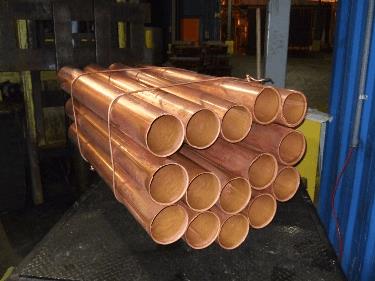The Ultimate Guide To Industrial Wastewater Treatment
Clean, fresh water is a luxury in many countries and is increasingly becoming a valuable commodity. Our society today is faced with the challenge of harnessing the power of advanced wastewater treatment technologies to preserve our precious water resources. Not only does this apply to municipal water treatment plants that work around the clock to make sure communities all over the world have access to clean, fresh water, but also in industrial processes to minimize usage and waste.
Many industrial processes in the automotive, textile, manufacturing, mining, oil and gas, and jewelry sectors are designed to reuse process water as much as possible. Even the most cleverly designed processes, however, require a 'bleed' or outlet to prevent the buildup of impurities that can affect the quality of the finished product if not properly dealt with.
Presently only 20% of globally produced wastewater receives proper treatment.
- United Nations Educational, Scienctific, and Cultural Organization (UNESCO)
In the years following the industrial revolution and continuing on into the information age, industries have been challenged to develop new and innovative ways to treat waste water and bleed streams to encourage recycling and reduce discharge towards the holy grail of so-called 'zero discharge'. We've come a long ways in the latter part of the 20th Century, but there's still work to be done as populations swell, economies grow and everyone strives to improve their quality of life and that of their children. Read: The 3 R's of Waste Water Treatment.
How can industries improve wastewater treatment processes?
Most people are now familiar with the 3 R's of recycling: Reduce, Reuse, Recycle. By following four similar principles — Recover, Reduce, Recycle, and Rescue — industries can further minimize raw resource requirements, eliminate waste disposal fees, and increase margins, all while promoting circular economies. Let's take a look at these 4 R's.
Recover
During any given manufacturing process, wastewater is often generated along with the finished product. The wastewater can have a myriad of components that can include inorganics, organics, and base and/or precious metals. In some cases, a certified hazardous waste disposal contractor is hired to remove the wastewater for treatment offsite. Often the sludge generated from the treatment of so-called hazardous waste is deposited in secure, monitored landfills if it cannot be reused or recycled. Metal hydroxides generated from pH adjustment using caustic or lime precipitation are not generally wanted by smelters and other metallurgical facilities as they are endothermic, difficult to process, and often contain the periodic table from A to Z.
We can create new ways to create clean water.
- Craig Venter
An alternative to hazardous waste disposal is to recover as many of the valuable components onsite using technology like electrowinning and electrodialysis that produce pure metal and an effluent that can be reused within the production or manufacturing facility. A leading semiconductor manufacturer recovers pure copper metal from back-end-of-line (BEOL) interconnect waste while destroying hydrogen peroxide, eliminating hazardous waste, and saving on treatment costs.

Reduce
Most modern industrial facilities have onsite wastewater treatment plants to treat the bulk of the wastewater. Sometimes wastewater from certain processes has contaminants that prevent it from being treated with the bulk. In this case, the wastewater may be segregated for processing offsite so as not to compromise the efficiency and efficacy of the existing wastewater treatment plant. What often goes unnoticed, is that by just recovering some of the metals and/or destroying some of the contaminants in the wastewater in a dedicated pretreatment system, the resulting effluent can be processed within an existing on-site bulk wastewater treatment facility. The result is a reduction in hazardous waste bound for landfill not to mention saving the offsite treatment costs.

Recycle
Metals are endlessly recyclable. By recovering metals from wastewater in a pure form, they can be recycled within the manufacturing process or sold to generate revenue to offset treatment costs. Furthermore, treating so-called 'bleed streams' in this way allows for recycle of the effluent decreasing the need for fresh water and chemicals such as acid, caustic, etc. This holistic recycle of metals, chemicals, and water promotes the ultimate closed loop 'zero discharge' process that is the holy grail of industrial processing.
Rescue
Wastewater treatment comes at a cost — and the more complex the treatment requirements, generally the higher the cost. But what if the process of wastewater treatment actually generated a saleable product? A holistic approach to preserving and managing natural resources in industrial processes can rescue revenue by recovering and recycling metals, chemicals, and water. Metals recovered as high purity cathode can be recycled or sold to market overall adding value to what was once considered valueless!
The future of our planet depends on the decisions we make today, and changing our perspective to wastewater treatment. Taking a holistic approach and incorporating the 4 R's of Recover, Reduce, Recycle, and Rescue will lead us one step closer to 'zero discharge' and a greener planet.
